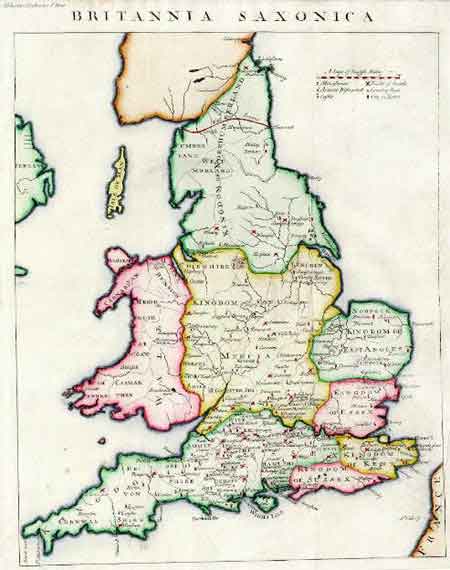Anglo-Saxon Place Names
After landing in Britain in the 5th Century, Anglo-Saxons began to push further and further inland. This led to the development of many Anglo-Saxon place names that followed a number of common naming traditions.
One of these traditions was to take on the name of the most important person living in the settlement, which would be paired with the common suffix ‘ingas’ (followers of) or similar. For example, the followers of Haesta settled in ‘Haestingas’, which is now known as Hastings.
As well as ingas, another common suffix was ‘ham’, which meant homestead or settlement. This would be added to a current name to create the new place name. Examples include Billingham, the settlement of the people of Billa, and Nottingham, the settlement of the people of Snot (which lost its S in modern years).
Place names were also given by the Anglo-Saxons to Woking, Wokingham and Wokefield. All of these names were dedicated to a man known as Wocc, and meant ‘Wocc’s people’, ‘the settlement of the people of Wocc’ and ‘Wocc’s open land’, respectively.

Another large influence on naming in Anglo-Saxon times was religion. There were some settlements, for example, that were named in honour of gods. For instance, Wednesbury was named after Woden, Tysoe was named after Tiw and Thursday was named after Thunor. Similarly, some were given named after the supernatural, such as Shuckburgh (or ‘demon’s hill’) and Pook’s Hill (or ‘hill haunted by a goblin’).
Due to their widespread colonisation of Britain, the Anglo-Saxons have had a huge influence on place names across the country. In fact, many of the country’s best known towns and cities were named by them:
- Hereford means ‘army ford’ as the river cross was large enough to manage an army.
- Stafford means ‘ford by a landing place’.
- Oxford means ‘ford for Oxen’.
- Bedford means ‘Beda’s ford’.
- Hertford means ‘stag ford’.
- Buckingham means ‘ground by a river that belongs to Bucca’s people’.
- Cambridge was developed from ‘Grantacaestir’ and ‘Granebrycg’, which means ‘bridge over the River Granta’.
- Warwick means ‘premises of the dweller by the weir’.
The suffix ‘wic’, seen above in Warwick, was a common suffix often used after directions. This is the case in Northwich, Southwick, Westwick and Eastwick. However, it was also used in combination with prefixes that referred to trees, such as in Hazelwick and Ashwick. It could also be used with farms, for example in Woolwich, Saltwick and Butterwick.
‘Worth’ was another common suffix among the Saxons, and meant enclosure. Some of the towns that use this suffix have clear names, such as Littleworth and Highworth, but some are more obscure:
- Hinxworth means ‘horse enclosure’
- Turnworth means ‘enclosure by the thorn tree’
- Lindworth means ‘enclosure by the lime trees’
‘Ton’, ‘tun’ and ‘ham’ are also common in Saxon naming. Ton and tun means enclosure, farmstead or village, and Tonbridge in Kent is one of the only areas where it is used as a prefix. There are many places where it is used as a suffix with a direction, such as Sutton and Weston. However, it is also used to highlight features, including Brockton and Brotton, which reference local brooks. Ham and ton are regularly combined in Anglo-Saxon names, and Northampton and Littehampton are prominent examples of this.
Additionally, the Anglo-Saxons used tree names in conjunction with ‘ley’, which means wood or clearing. Examples include Oakley, Ashley, Thornley and Willey.
See also:
Norman Place Names in England
Norman Place Names
Viking Place Names
The Origin of Place Names
The History of County Names
MLA Citation/Reference
"Anglo-Saxon Place Names". HistoryLearning.com. 2025. Web.
